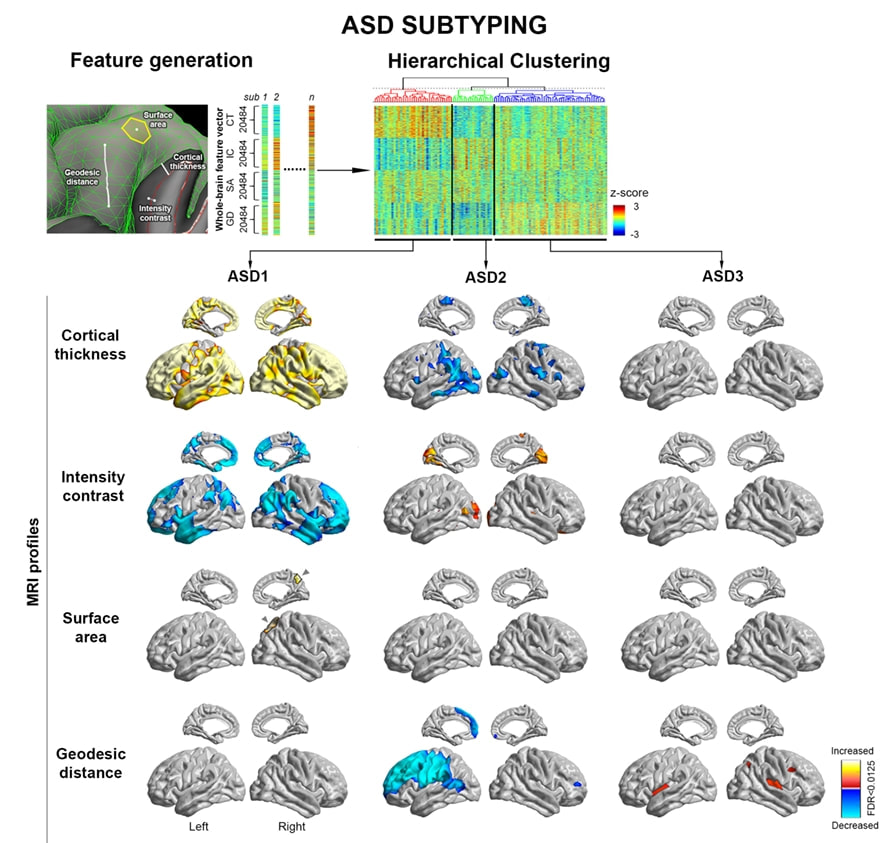Q&A WITH HONG SEOK-JUNBy Tzipi Horowitz-Kraus This interview series highlights abstracts from the OHBM meeting that were identified by the Program Committee as “potentially newsworthy”. Abstract authors were asked to explain their research in more detail, discuss the context of their findings, and the possible implications for the field.
Tzipi Horowitz-Kraus (THK): If you had to explain your study to your non-brain mapping friends, what would you say? Hong Seok-Jun (HSJ): Autism spectrum disorder is a common neurodevelopmental diagnosis. Previous research suggests that there is likely no single autism type, but rather a collection of different subtypes of autism that may each be associated with different biological causes and behavioral symptoms. In our project, we built a novel approach to subgroup a larger population with a diagnosis of autism based on multiple MRI measures of cortical morphology. We could indeed identify multiple subgroups with different imaging features and functional network anomalies. Using a machine learning framework, we furthermore show that information about subtype was useful in predicting the severity of behavioral symptoms in individual cases, possibly suggesting clinical utility of the proposed framework. THK: What motivated you to go into your particular area of research? HSJ: In autism, previous imaging studies have reported mixed findings, failing to converge onto a common pattern of brain anomalies. This may challenge current diagnostic procedures and impede person-specific therapy. We hypothesized that a main source of the inconsistency across previous findings may relate to heterogeneity across the autism spectrum itself. Our study presented at this OHBM conference addressed the heterogeneity of structural brain phenotypes as well as their potential implication in behavior and brain function in autism spectrum. THK: Why do you think your abstract was selected as newsworthy? HSJ: Our study addresses a timely question in the field - namely the identification of different subtypes within a larger and rather diverse clinical population. By integrating advanced MRI features of vertical and horizontal cortical organization (such as cortical thickness, cortical interface blurring, surface area, and geodesic distance), our framework may offer a biologically meaningful way to group subtypes of autism phenotypes which are characterized by specific brain morphology and behavioral symptoms. Finally, our study makes use of both unsupervised as well as supervised learning techniques to address these high dimensional datasets, and can thereby derive predictors of symptom severity at the individual subject level. THK: What are your next (research) steps going to be, given these findings? HSJ: In future studies, MRI subtyping approaches could be complemented by other neuroimaging modalities, more extensive behavioral assessments, as well as genetic information. This would collectively result in a comprehensive and multidimensional characterization of the autism spectrum. Furthermore, our work may provide a useful framework to address the heterogeneity often found in other neurodevelopmental disorders.  Our novel imaging framework allows for an objective identification of multiple biotypes in the population of autism spectrum disorder (ASD), based on advanced MRI markers for cortical morphology. The discovered ASD subtypes indeed reveal distinctive neuroanatomical phenotypes, suggesting highly heterogeneous biological substrates across the autism spectrum.
0 Comments
Your comment will be posted after it is approved.
Leave a Reply. |
BLOG HOME
Archives
January 2024
|

 RSS Feed
RSS Feed